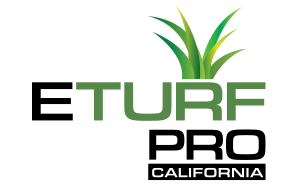Does Artificial Turf Drain Well?
Time is gone when artificial turfs were only for golf courses and football pitches. Nowadays, homeowners from all over the country are considering installing artificial turfs. The biggest reason why most homeowners prefer artificial grass over natural grass is that it looks good and requires little ongoing maintenance.
However, a common concern about artificial turf, especially among homeowners with lawns that do not have direct access to sunlight, is how well it drains.
As a homeowner, you want to ensure that an impending rainy season will not cause flooding and leave behind a muddy mess on your lawn. Fortunately, as the demand for artificial turn has continued to rise over the years, so has the quality.
Here is everything you need to know about the drainage capabilities of artificial turfs.
How Does Artificial Turf’s Drainage Compare to Natural Grass?
A lawn’s drainage capability is how quickly it can get rid of rainfall and other fluids from its surface. Drainage is a key aspect to consider when installing artificial turf as it determines its aesthetic value, safety, and readiness to use.
Fortunately, most artificial turfs in the market today drain quickly, and you may even be surprised to learn that some high-quality ones have a superior drainage capability over natural grass. In fact, these artificial lawns can drain up to 30 inches of water per square yard in just an hour.
This means that it will take unusual rainfall levels for your lawn to flood. Natural grass becomes muddy every time it rains and leaves behind a huge mess. On the other hand, artificial grass allows water to run through the backing.
As a result, artificial turf becomes dry in a few hours, while natural grass may remain damp and muddy for days or even weeks. However, it is important to note that how well your artificial turf is installed will influence its drainage and longevity.
Nowadays, many companies install artificial turfs. While some do a great job, other companies do a poor one ignoring proper preparation and designing an efficient porous backing. Also, other companies install artificial turfs above natural grass making it highly non-porous.
The drainage issues will increase when this happens, and you will need to hire another company to correct the installation and existing errors.
The Right Way to Prepare Ground for Artificial Turf
The proper installation of artificial turf requires adequate ground preparation. You should ensure that you use a suitable base material and that everything evens out smoothly. If you are planning to install artificial turf on your lawn by yourself, ensure that you follow these steps:
Identify the soil type
The first step when preparing the ground for artificial turf is to identify the soil type. When you verify which soil you will be working with, you can adequately decide the type of stone aggregate or sand your project will need.
Remove the existing turf and clear out the area.
Once you have identified the soil, the next step is to remove the existing turf from the installation site. After removing the existing turf, clear the area you are working on of visible green waste and water the soil.
If you plan to install your artificial turf over a small area, a spade is enough to remove the existing turf and clear the area. However, use a turf cutter if you are working on a bigger lawn.
Experts recommend digging 5cm to 10cm deep. Digging ensures that your artificial turf looks natural compared to its surroundings.
You can then level the ground and fix uneven parts to make the lawn aesthetically pleasing once the artificial turf comes on top.
Prepare the base
As mentioned earlier, the soil you will determine everything you need to prepare before laying the artificial turf. Clay soil does not offer good drainage, while sand soil has excellent drainage capabilities.
Therefore, when working with clay soil, you must add a stone layer sub-base before installing the artificial turf. This sub-base should be approximately 5cm to 10 cm in depth. On the other hand, if you are working on sandy soil, you will need about 5cm of sharp sand.
Common Causes of Drainage Issues with Artificial Turf
Drainage is undoubtedly a huge challenge that faces natural and artificial turf. If your artificial turf is not installed correctly with adherence to proper drainage, it will not last long.
Additionally, poor drainage will make artificial turf appear uneven and covered with numerous puddles, which is bad for curb appeal.
Your kids and pets will become wet every time they play on the lawn. Plus, it could turn into breeding grounds for bacteria and insects. The following are the leading causes of drainage issues with artificial turfs:
Installing artificial turf over concrete
If you install your artificial turf over concrete, you will deal with drainage problems on your lawn more. If you have to install your artificial turf over concrete, you must ensure that you install an alternative drainage system above the concrete.
A quick and effective solution is drilling holes in the concrete to make the surface permeable to water. If not, you will deal with numerous puddles on your lawn every time it rains.
Using the wrong fill layer
You will face severe drainage issues during installation if you use the wrong fill material. That is why you must hire a professional company with a good reputation and experience installing artificial turfs.
Poorly installed aggregate base
Before installing the artificial turf, the installers should consider the soil underneath. If they do not, and the soil beneath has poor drainage, the artificial lawn will face drainage problems. Again, this highlights the importance of hiring an experienced company for artificial lawn installation.
Benefits of Good Artificial Turf Drainage
- Your lawn is always ready to use
- You do not need to worry about unwanted bugs and allergens
- Easy to get rid of sewage, animal waste, and other contaminants
- Less mess and cleaner surroundings
Summing Up
Good drainage for your artificial turf will keep you from dealing with minor issues and keep your home tidy. After installing your artificial turf, you must regularly maintain it to ensure it continues draining well.


